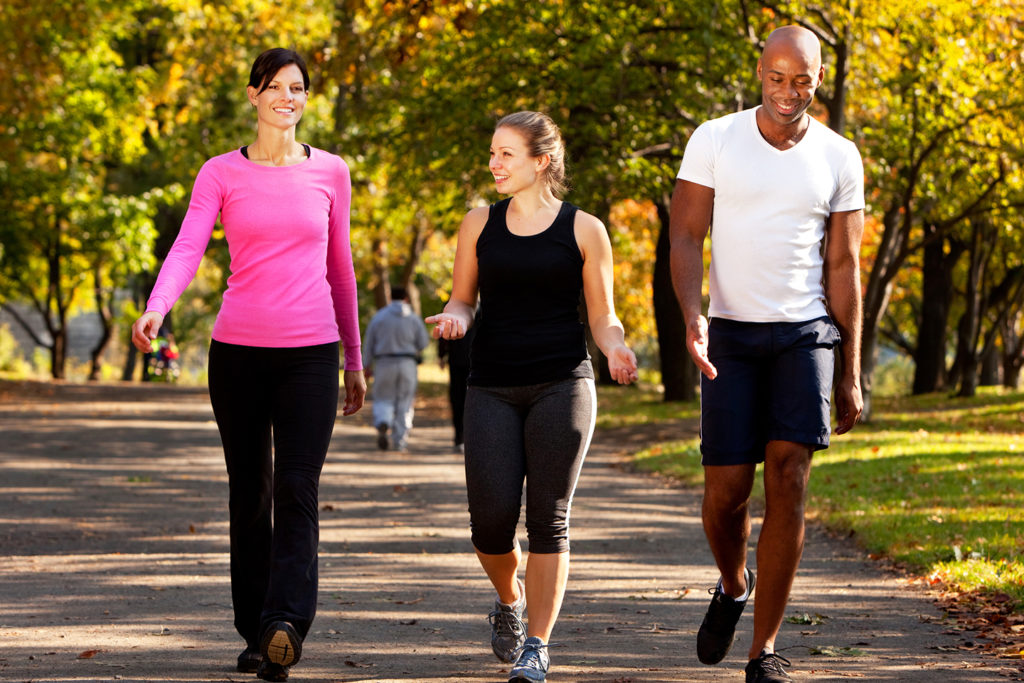
When done correctly, exercise can be the cherry on top of healthy eating. Unfortunately, not all exercise is good for you. Injuries result when you put undue strain on muscles, joints, or your internal communication system. The conditions under which exercise is performed frequently reduce its intrinsic benefits:
Excessive exercising or exercising at inappropriate times can turn benefits into liabilities.
Some sports and activities are more beneficial than others to the well-being of both your neurological system and your cardiovascular system. These sports involve contralateral movement: alternating simultaneous movement of the right arm and left leg with the left arm and right leg.
Basketball, soccer, running, swimming, or backstroke all require alternating right and left movements of opposite arms and legs. On the other hand, tennis, golf, and baseball are “one-sided” sports – the swing is always on the same side. The saving grace for these is that they also require running or walking. If you ride a cart while playing golf, you aren’t getting the most benefit from the game, even though you may do a lot of arm-swinging if you are a high-handicapper!
Weight lifting and bicycle riding are not contralateral exercises. Weight lifting involves using arms and legs in unison during short bursts of strenuous activity. Bicycling gives the legs and cardiovascular system a good workout, but the arms and upper body may remain relatively static. Although both weight lifting and bicycle riding can be beneficial in their own ways, they should be followed immediately by a period of contralateral walking that includes swinging the arms.
Walking is probably the best exercise for the most significant number of people. Everyone who can get up and move around can benefit from a program of proper walking. However, there is a right way and a wrong way to walk. Walking is an invigorating exercise that stimulates but doesn’t stress the body’s natural rhythms. When done correctly, walking is excellent contralateral action. Your arms should be allowed to swing freely at your sides, alternating simultaneous movement of the right arm and left leg with the left arm and right leg. Walking best balances your internal system when you aren’t holding your hands in your pockets or carrying something. When your arms swing freely at your sides, the internal communication that keeps your body functioning properly improves.
If you haven’t been getting much exercise, begin therapeutic walking slowly and gradually increase your speed and distance to suit your level of stamina. You should walk fast enough to increase your pulse rate to about 120 beats per minute. This brisk walking relaxes and tones the lower back muscles associated with the diaphragm. As a result, walking even helps relieve the symptoms of a hiatal hernia. Walking also promotes proper function of the lungs, stomach, cardiovascular, and elimination systems. To top it all off, contralateral walking improves blood circulation and stimulates the transportation of oxygen to all parts of the body, including the brain! Keep the contralateral concept in mind the next time you have a headache or muscle ache.
You can actually “walk it out” with this proper walking technique. However, please remember that you don’t get healthy by just exercising. You generally get healthy by giving your body the thought patterns and fuel to maintain a steady state of homeostasis and functionality effortlessly. Health is served at the “dinner table” and in the mind; muscles and stamina are built by exercise!
*These statements have not been evaluated by the Food and Drug Administration. These products are not intended to diagnose, treat, cure, or prevent any disease.
We will be closed from December 22nd – January 1st, 2024, for Christmas/New Year (We will return to the office on January 2nd. Please note that shipping services will also resume on January 2nd)